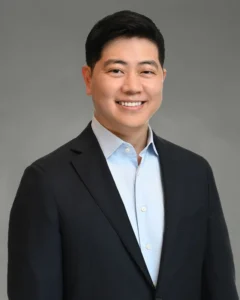College. Career. Marriage. Baby. The new natural order in a woman’s life sometimes wreaks havoc on nature’s design for fertility. Studies show that approximately 20 percent of women wait until after age 35 to begin their families.* Society tells women that they can have it all without warning them that waiting too long to have a baby may interfere with a woman’s ability to conceive.
One in six couples struggle with infertility, so it’s natural to wonder: Will I have trouble getting pregnant too? For women over 35, starting a family may not happen as easily as expected. Fortunately, information can empower you to make choices now that can help enhance, protect or preserve your fertility.
Choices for Women Facing Cancer
At Texas Fertility Center, we see young women who need to preserve their fertility when faced with cancer or other diseases that can destroy the reproductive system. We also celebrate successful pregnancies with women well into their 40s.
According to the Association of Reproductive Medicine: “While infertility is a disease, it is in many ways preventable. The only way to protect your fertility is to be educated about the risks.”
Risks include environmental factors, alcohol and drug use, disease, smoking and weight. What tops the list? Maternal age.
Are You a Clock Watcher?
You are born with a finite number of eggs, which are found in your ovaries. As you age, so do your eggs. No shot or pill can reverse the process. That’s why the fertility window typically opens around age 16, remains very open in your 20s and starts closing in your later 20s to mid-30s. By 40, the chances of getting pregnant on your own fall to five percent.*
Statistically, your chances of getting pregnant fall at age 35 and continue to decline each year after that. Men continue to produce sperm their entire lives, and age has only modest impact on sperm motility, number and morphology.
Celebrities like Nicole Kidman, Madonna and Jennifer Aniston may unwittingly reinforce the notion that getting pregnant can occur at any age. What the headlines and cute baby pictures don’t reveal is that happy Hollywood endings often occur as a direct result of assisted reproductive technology.
Partnering with a fertility doctor, one that holds an advanced degree as a reproductive endocrinologist, can actually increase your chances by as much as 88 percent (compared with infertile women who try to get pregnant on their own).
Texas Fertility Center’s reproductive endocrinologists and fertility lab can determine your ovarian reserve as well as any other barriers to pregnancy.
Treatment options may include IVF or IUI and the following advanced reproductive technologies:
Donor eggs and/or donor sperm with or without a gestational carrier
Your path to pregnancy may involve eggs from either a known or anonymous donor. This is typically considered if the ovarian reserve is very low and other treatments are unlikely to be successful.
Elective egg freezing
Also known as ooctye cryopreservation, this option helps women who have been diagnosed with cancer, lupus, Turners syndrome or other health threats that involve chemotherapy, radiation or surgical intervention. Women with a family history of early menopause also may benefit from elective egg freezing. Still others choose it as a proactive measure to preserve their fertility.
Advances in ooctye cryopreservation may increase the chances for a successful pregnancy, but it is still considered an experimental treatment. .
Embryo freezing
You can choose to freeze and store excess embryos not transferred in your IVF cycle for use at a future date. This provides two advantages: a less costly subsequent “frozen embryo” cycle and the chance to ‘stop time’ at the age you produced the embryo. This process also helps couples that choose to preserve and protect their fertility.
If you are over 35 and considering starting a family, talk with a fertility doctor now to find out what steps you can take to maximize your chances. Advances in reproductive technology have given thousands of couples reason to hope and successful outcomes.




